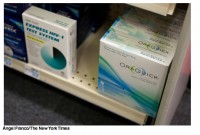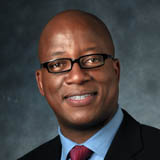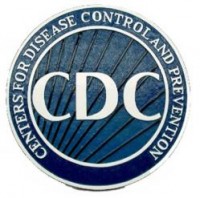NY Times By DONALD G. McNEIL Jr.
Some experts said the OraQuick test’s $40 price would prevent many people from using it to screen partners.
But some experts and advocates say that another use, unadvertised, for the OraQuick test – to screen potential sexual partners – may become equally popular and even help slow an epidemic stuck at 50,000 new infections each year in the United States.
There are reasons to think that screening might make a difference. Studies have found that a significant minority of people who are H.I.V.-positive either lie about their status or keep it secret, infecting unsuspecting partners.
And though the manufacturer, OraSure Technologies, is not promoting the use of the test for screening, 70 percent of the 4,000 men and women in the company’s clinical trials said they would either definitely or very likely use it that way. Some even suggested that the company sell boxes of two so couples could be tested together.
The only study of the practice – a small one involving 27 gay men who frequently had sex with virtual strangers without using condoms – found that it probably prevented some infections. The study was published online in August by the journal AIDS and Behavior.
“If it becomes a community norm, people may start testing their partners,” said Alex Carballo-Dieguez, the lead author of the study, who is a psychology professor at Columbia University and the associate director of the H.I.V. Center for Clinical and Behavioral Studies at the New York State Psychiatric Institute. “On sex sites now, men advertise themselves as ‘drug-and-disease-free.’ They could start saying ‘D-and-D-free, and willing to prove it.’ ”
Other AIDS experts had doubts. Some thought $40 was too much for people who need to screen multiple partners. Others said that men and women who are not comfortable demanding that their partners wear condoms would be unable to insist on a test.
And some, including Anthony S. Fauci, the country’s best-known AIDS doctor, worried that a negative test could lead partners to forgo condoms, removing the barrier to both H.I.V. and other diseases like gonorrhea.
The OraQuick test is imperfect. It is nearly 100 percent accurate when it indicates that someone is not infected and, in fact, is not. But it is only about 93 percent accurate when it says that someone is not infected and the person actually does have the virus, though the body is not yet producing the antibodies that the test detects.
The men in Dr. Carballo-Dieguez’s study were given 16 tests each and followed for three months. None of them had unprotected sex with anyone who tested positive.
Of the 101 partners they tested, 10 were positive. In six cases, it was how the partner first learned he was infected. (Ten percent is a very high success rate for H.I.V. testing, experts said.)
Twenty-three other partners refused testing. Two, after being asked, admitted knowing they were infected.
Seven men got angry, and one stomped on the kit. One man walked out saying he wanted to be alone and broke off contact.
Asking usually did not ruin the moment’s intimacy, the men said. Some pairs did the tests together, swabbing each other’s gums. Some passed the 20-minute wait talking, playing video games or in foreplay. One 47-year-old man found the wait helpful, telling the researchers, “It gives you that extra 20 minutes to decide, ‘O.K., if this comes back negative, am I really ready to bareback?’ ” – slang for having sex without a condom.
Dr. Carballo-Dieguez said people’s decision about whether to screen would depend on various factors, including the test’s price and how comfortable they were with its imperfect accuracy.
OraSure appears ambivalent about partner screening. AIDS experts said the company might fear lawsuits by people infected by partners who got false negatives – a possibility it declined to comment on. In an interview, its president, Douglas A. Michel, said, “We’re supportive, as long as it’s between consenting adults.”
But he also said the label would warn that the test “should not be used to make decisions that might put the user at risk of contracting H.I.V.”
Asked about the price of the test, he said market research indicated that most users would buy it once or twice a year, so $40 was “appropriate.”
The technology is similar to that in home pregnancy kits, which sell for as little as $4 each.
Larry Kramer, the longtime AIDS activist, called screening “a potentially cool idea, but it depends on how the partner/date/trick/stranger takes it.”
If a test had been around 30 years ago, he added, “there would have been a lot more people alive today.”
Hunteur Vreeland, a professional party organizer who arranges “gay porn harbor cruises” and “underwear erotic parties” at Paddles, a dungeon-themed club in New York, said he would even consider selling home tests at his events. He now offers free H.I.V. testing at them in conjunction with the Men’s Sexual Health Project of Bellevue Hospital Center.
“Knowledge is never a bad thing,” he said. He added that if a potential partner unexpectedly pulled out a test kit, he would probably leave.
Then he reconsidered.
“But if the dude was hot, and maybe I was on the cusp of getting tested anyway – well, then, maybe I’d be, ‘All right, I’ll take it.’ ”
Justin Goforth, the director of medical adherence for Whitman-Walker Health, a clinic in Washington with many AIDS patients, said he doubted that screening would help his clientele.
“It’s expensive,” he said. “People who can afford it already have strategies for avoiding infection. It won’t help women whose men refuse to use condoms, because he’ll refuse to take the test, too. And the same for young black men – they usually get infected by older men, and the power dynamic is not in their favor.”
Steven Petrow, the author of “Complete Gay & Lesbian Manners,” argued against screening.
“Nobody should take this test and 20 minutes later go have unprotected sex,” he said. “The art of talking to a partner is the primary thing. You have to respect each other and tell the truth.”
But numerous studies have shown that many sexual partners do not.
In a large 2007 survey led by Dr. Robert Klitzman, also of Columbia University and the New York State Psychiatric Institute, nearly 20 percent of infected gay men admitted to having had unprotected sex with at least one partner without revealing their status.
Men made many excuses, saying they believed that they were not infectious or felt it was the partner’s duty to ask.
An equally large 2003 study led by Dr. Daniel H. Ciccarone of the University of California, San Francisco, found that about 9 percent of H.I.V.-positive heterosexual men and women and about 14 percent of infected gay or bisexual men had recently had unprotected sex with someone they either knew was uninfected or were unsure about, without revealing their own infection.
The authors estimated that in the six months their study covered, 17,000 infected gay men across the country and almost 5,000 infected heterosexual men and women had sex without telling the truth.







